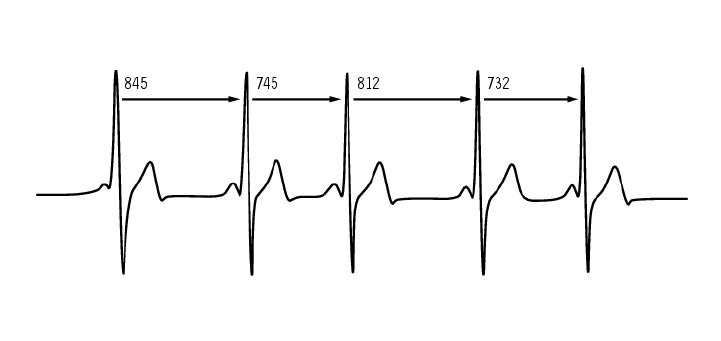CS600 User Manual
Table Of Contents
- User manual CS600
- Contents
- 1. Introduction
- 2. Cycling Computer Components
- 3. Getting Started
- 4. Prepare for Training
- 5. Training
- 6. After Training
- 7. Settings
- 8. Training Program
- 9. Tests
- 10. Using a New Accessory
- 11. Backround Information
- 12. Customer Service Information
- Index

Step 5: Cycle up the hill once again at a pace that you can only hold for 1 minute. Try to cycle halfway
up the hills. Note your highest heart rate. This brings you close to your maximum heart rate. Use this
value as your maximum heart rate to set training zones.
Step 6: Make sure you get a good cool-down, a minimum of 15 minutes.
Heart Rate Value in a Sitting Position
HR
sit
is your average heart rate when completely still (i.e. while sitting). To easily determine HR
sit
,
wear your transmitter, sit down, and do not engage in any physical activity. For a more precise
measurement, repeat the procedure several times and calculate your average.
Heart Rate Reserve
Heart rate reserve (HRR) is the difference between maximum heart rate (HR
max
), and resting heart rate
(HR
rest
)*. HRR is used to calculate exercise heart rates. It is the range within which heart rate varies
depending on exertion level. HRR equals oxygen uptake reserve (VO
2
R).
Exercise heart rate can be determined by using the Karvonen formula**. Add the given percentage of
heart rate reserve to resting heart rate.
Exercise HR = % of target intensity (HR
max
– HR
rest
) + HR
rest
Example:
Target intensity 70 % HRR for a person with HR
max
201 bpm and HR
rest
50 bpm
Exercise HR= 70% (201-50) + 50
Exercise HR=156 bpm
For a precise exercise heart rate, you need your exact HR
max
and HR
rest
. When using estimated HR
max
,
exercise heart rate values are always estimates.
*In Polar CS400 and CS600 cycling computers, the heart rate value during a resting state is measured
in a sitting position (HR
sit
). This is for practical reasons since HR
sit
is used in energy expenditure
calculation because of accuracy. HR
sit
matches the low intensity to which different exercise intensities
can be compared.
**Karvonen M, Kentala K, Mustala O. The effects of training on heart rate: a longitudinal study. Ann
Med Exp Biol Fenn 1957; 35: 307-315.
Heart Rate Variability
Heart rate varies with every heartbeat. Heart rate variability (HRV) is the variation of beat-to-beat
intervals, also known as R-R intervals.
HRV indicates the fluctuations of heart rate around an average heart rate. An average heart rate of 60
beats per minute (bpm) does not mean that the interval between successive heartbeats would be
exactly 1.0 sec, instead they may fluctuate/vary from 0.5 sec up to 2.0 sec.
HRV is affected by aerobic fitness. HRV of a well-conditioned heart is generally large at rest. Other
factors that affect HRV are age, genetics, body position, time of day, and health status. During
Polar CS600 User Manual 47










